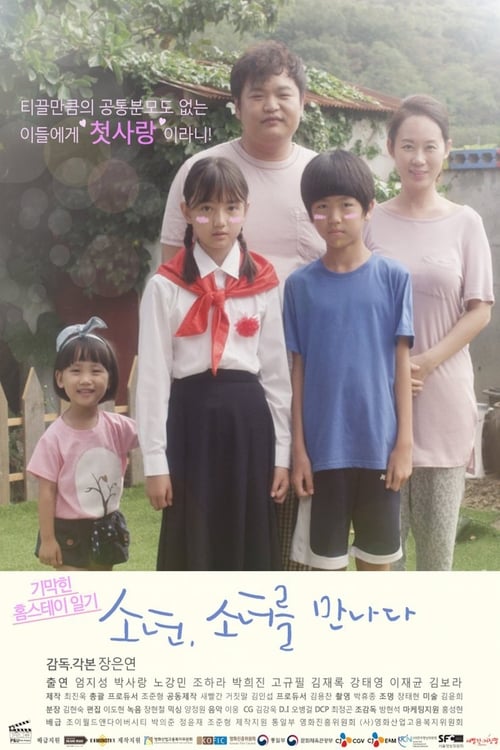
Ask Your Own Question
What is the plot?
What is the ending?
In the ending of "The Long Way Home," the main character, a young man named Sam, finally confronts his past and the emotional turmoil that has haunted him. He reconciles with his estranged father, leading to a moment of understanding and forgiveness. The film concludes with Sam finding a sense of peace and direction, symbolized by his decision to move forward in life, leaving behind the burdens of his past.
As the film approaches its conclusion, the atmosphere is thick with tension and unresolved emotions. Sam, having journeyed through various landscapes both physically and emotionally, finds himself at a crossroads. The scene opens with him standing at the edge of a cliff, overlooking a vast expanse of nature that mirrors his internal struggle. The wind whips around him, a physical manifestation of the chaos he feels inside. He takes a deep breath, contemplating the weight of his decisions.
In the next scene, Sam receives a phone call from his father, a man he has not spoken to in years. The conversation is fraught with hesitation and unspoken words. Sam's voice trembles as he grapples with feelings of anger and hurt, but there is also a flicker of hope. His father, on the other end, expresses regret and a desire to reconnect. The camera captures the subtle shifts in Sam's expression, revealing his internal conflict--he wants to forgive but fears the pain of reopening old wounds.
The following scene transitions to a small diner where Sam agrees to meet his father. The diner is quaint, filled with the sounds of clinking dishes and soft chatter, creating a stark contrast to the heaviness of their impending conversation. As Sam enters, he spots his father sitting at a booth, looking older and wearier than he remembers. The tension is palpable as they exchange awkward greetings, both men unsure of how to bridge the chasm of years apart.
As they sit across from each other, the conversation begins hesitantly. Sam's father speaks of his regrets, his voice thick with emotion. Sam listens, his heart racing, torn between the desire to lash out and the yearning for connection. The camera focuses on their hands, fidgeting nervously, symbolizing the unsteady ground they are on. Slowly, Sam begins to share his own pain, recounting moments from his childhood that shaped his feelings of abandonment. The dialogue is raw and honest, revealing the depth of their estrangement.
In a pivotal moment, Sam's father reaches across the table, placing his hand over Sam's. This gesture, simple yet profound, signifies a breakthrough. Sam's eyes well up with tears as he feels the warmth of his father's touch, a long-lost connection rekindling. They share a moment of silence, the weight of their shared history hanging in the air, but now tinged with a sense of understanding.
The scene shifts to a montage of Sam's journey home, interspersed with flashbacks of his childhood. He walks through familiar streets, each step resonating with memories of laughter and pain. The visuals are rich with color, capturing the vibrancy of life around him, contrasting with the darkness he has felt for so long. As he approaches his childhood home, he hesitates, but the resolve in his eyes shows he is ready to face whatever lies ahead.
The final scene unfolds in the backyard of his childhood home, where Sam stands alone, looking at the old swing set that once brought him joy. The sun sets in the background, casting a golden hue over the scene. He takes a deep breath, feeling a sense of closure wash over him. In this moment, he understands that while the past cannot be changed, he has the power to shape his future.
As the credits roll, the audience is left with a sense of hope. Sam's journey has been one of self-discovery and reconciliation. His father, having taken the first step towards mending their relationship, is also on a path of redemption. The film closes with Sam walking away from the house, a determined look on his face, symbolizing his commitment to moving forward and embracing the possibilities that lie ahead.
Is there a post-credit scene?
The Long Way Home, produced in 2015, does not feature a post-credit scene. The film concludes its narrative without any additional scenes or content after the credits roll. The story wraps up with a focus on the emotional journey of the characters, leaving the audience with a sense of closure regarding their experiences and growth throughout the film.
What challenges does the main character face during their journey?
The main character, a young woman named Sarah, faces numerous challenges during her journey home, including navigating treacherous landscapes, dealing with harsh weather conditions, and overcoming her own self-doubt and fears. Each obstacle forces her to confront her past and the reasons she left home in the first place.
How does the setting influence the mood and tone of the film?
The setting, which includes vast, desolate landscapes and bustling towns, significantly influences the mood and tone of the film. The isolation of the wilderness reflects Sarah's internal struggles, while the warmth of the towns she visits contrasts with her feelings of loneliness. This juxtaposition enhances the emotional depth of her journey and highlights her transformation.
How does Sarah's relationship with her family evolve throughout the film?
As Sarah progresses on her journey, her relationship with her family is explored through flashbacks and her internal monologue. Initially, she feels resentment towards her family for their expectations and lack of understanding. However, as she reflects on her memories and the love they shared, she begins to understand their perspectives, leading to a reconciliation of sorts by the film's conclusion.
What role do the supporting characters play in Sarah's journey?
Supporting characters, such as an elderly man she meets along the way and a group of fellow travelers, play crucial roles in Sarah's journey. The elderly man shares wisdom and life lessons that challenge her views, while the fellow travelers provide camaraderie and support, helping her realize she is not alone in her struggles.
What significant events trigger Sarah's moments of self-discovery?
Key events that trigger Sarah's moments of self-discovery include a near-death experience during a storm, a heartfelt conversation with the elderly man about loss and hope, and a pivotal moment when she helps another traveler in need. Each of these events forces her to confront her fears and ultimately leads to personal growth.
Is this family friendly?
"The Long Way Home," produced in 2015, is a film that explores themes of family, loss, and the journey of self-discovery. While it is not explicitly designed as a children's movie, it does contain elements that may resonate with a family audience. However, there are some potentially objectionable or upsetting aspects that could affect children or sensitive viewers.
-
Emotional Themes: The film delves into heavy emotional topics such as grief, loss, and the struggles of moving on after a tragedy. These themes may be difficult for younger viewers to fully comprehend or process.
-
Family Conflict: There are scenes depicting tension and conflict within the family, which may be distressing for children who are sensitive to familial discord.
-
Depictions of Struggle: Characters face significant personal challenges and hardships, including moments of despair and hopelessness that could be upsetting.
-
Mature Conversations: Some dialogue may touch on adult themes or include discussions that are more suitable for mature audiences, which could be confusing or inappropriate for younger viewers.
-
Visual Imagery: While not graphic, there may be scenes that evoke strong emotional responses, such as moments of sadness or reflection that could be intense for sensitive viewers.
Overall, while "The Long Way Home" can be appreciated for its heartfelt storytelling, parents may want to consider these elements when deciding if it is appropriate for children or sensitive individuals.










































